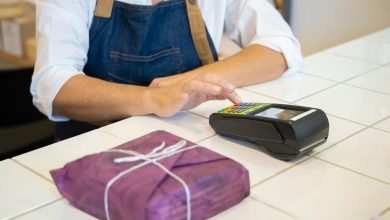How to Organize Your Money Digitally

How to Organize Your Money Digitally: A Complete Guide
In today’s world, managing your money digitally is not just convenient—it’s essential. With so many apps, banking options, and automation tools available, organizing your finances has never been easier. But where do you start? In this guide, we’ll break down simple, practical steps to help you take full control of your finances using digital tools.
1. Choose the Right Digital Banking Platform
The first step to organizing your money is having the right bank account. Traditional banks now offer excellent online services, but you may also consider digital banks or neobanks for better features like:
✅ No-fee accounts
✅ High-interest savings
✅ Automated budgeting tools
💡 Pro Tip: Look for a bank that offers real-time transaction tracking and easy integrations with budgeting apps.
2. Automate Your Finances
Automating your finances ensures that you never miss a bill or a savings goal. Set up the following:
🔹 Automatic Bill Payments – Schedule payments for utilities, loans, and subscriptions.
🔹 Savings Transfers – Move a fixed amount to your savings account every month.
🔹 Investment Contributions – Automate deposits into your investment or retirement accounts.
💡 Pro Tip: Many banks offer “round-up savings,” where purchases are rounded up to the nearest dollar, and the extra cents go into your savings!
3. Use Budgeting Apps
Budgeting apps help you track spending, categorize expenses, and set financial goals. Some popular ones include:
📊 Mint – Tracks expenses and provides budgeting insights.
💰 YNAB (You Need a Budget) – Focuses on zero-based budgeting.
💳 PocketGuard – Helps prevent overspending by showing how much you can safely spend.
💡 Pro Tip: Choose an app that syncs with your bank accounts for real-time updates.
4. Separate Your Accounts for Better Money Management
A great way to stay organized is by having multiple digital accounts for different purposes:
🏦 Checking Account – For everyday spending and bills.
💰 Savings Account – For emergency funds and short-term goals.
📈 Investment Account – For stocks, ETFs, and retirement planning.
💡 Pro Tip: Some banks let you create “sub-accounts” or “buckets” to separate money for different goals without opening multiple accounts.
5. Go Cashless with Digital Payments
Mobile wallets and payment apps make transactions faster and more secure. Consider using:
📱 Apple Pay / Google Pay – Tap to pay with your phone.
💳 Venmo / PayPal / Cash App – Send and receive money easily.
📢 Cryptocurrency Wallets – If you’re into digital currencies, keep a secure wallet.
💡 Pro Tip: Always enable two-factor authentication (2FA) for extra security!
6. Monitor Your Credit and Spending Regularly
Keeping an eye on your credit score and expenses helps prevent fraud and overspending. Use:
📈 Credit Monitoring Services – Free tools like Credit Karma or Experian alert you about credit score changes.
📊 Spending Reports – Most banking apps provide spending summaries and financial health reports.
💡 Pro Tip: Set up spending alerts to track big transactions and avoid unwanted surprises.
7. Secure Your Digital Finances
Online security is crucial when managing your money digitally. Follow these safety tips:
🔐 Use strong, unique passwords for banking and financial apps.
📲 Enable multi-factor authentication (MFA) for extra security.
🛡️ Regularly review account statements for unauthorized transactions.
💡 Pro Tip: Consider using a password manager to keep all your financial logins safe and accessible.
Final Thoughts
Organizing your money digitally isn’t just about convenience—it’s about gaining control and making smarter financial decisions. By using the right tools, automating payments, and staying secure, you can streamline your finances and achieve your financial goals with ease.



